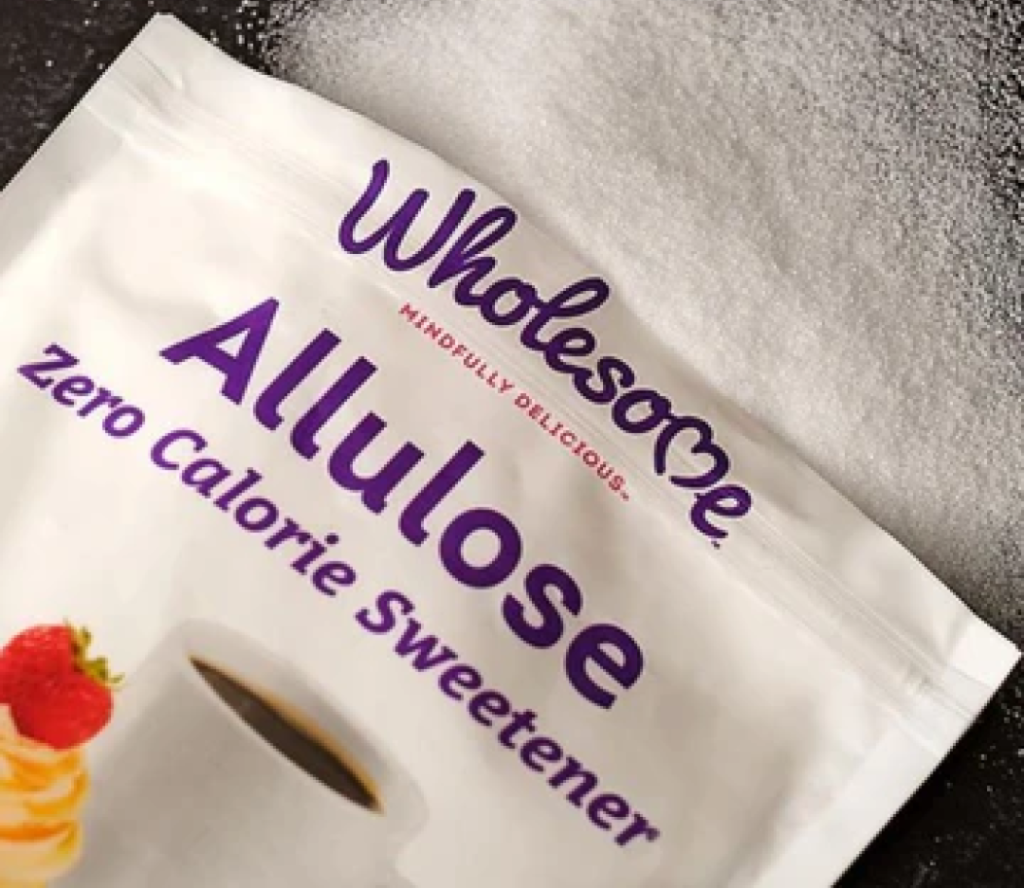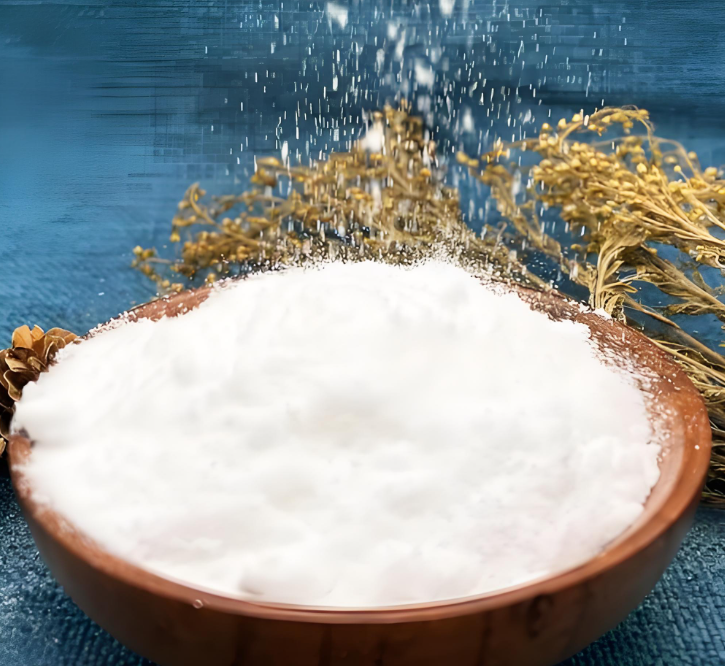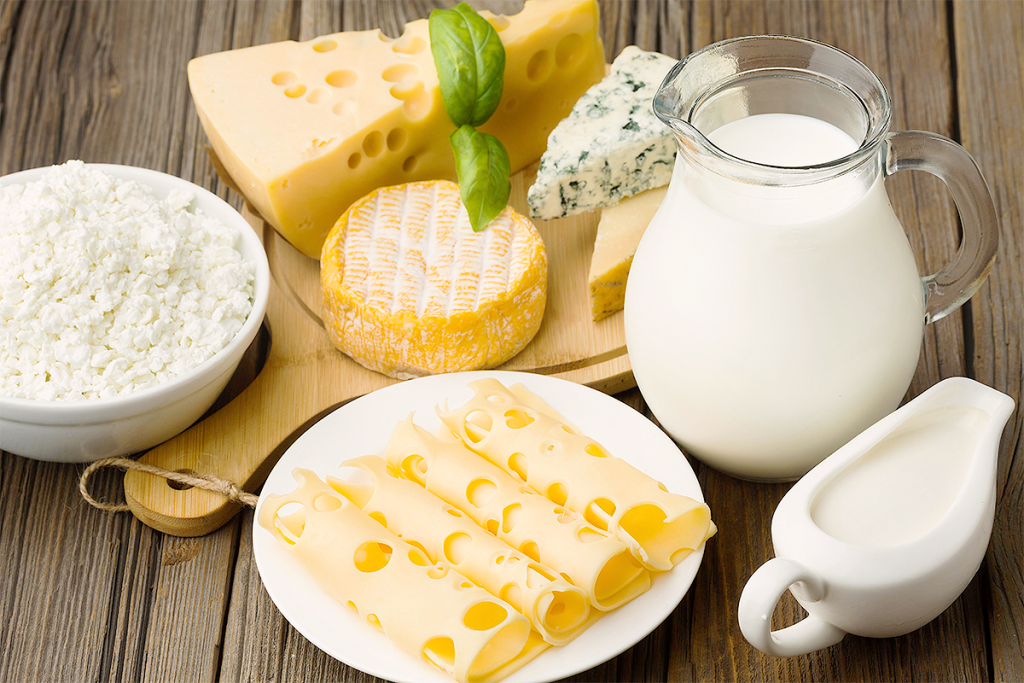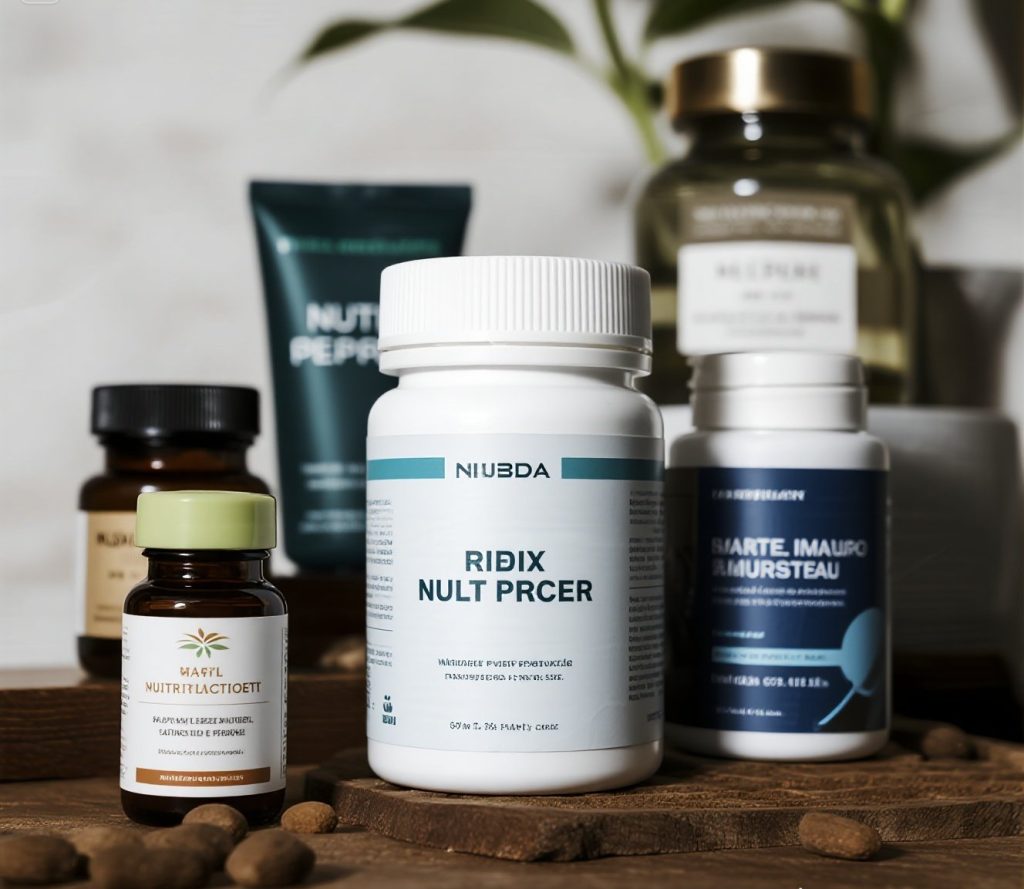D-Allulose has finally arrived.
On June 26, 2025, the National Health Commission of China approved the approval of D-allulose and officially announced it as the latest batch of new food ingredients yesterday (July 2), allowing this highly anticipated “star sugar substitute” to finally make its mark in China. On July 2nd, the popularity index of “Allulose” on WeChat platform surged by 4251.95%.
D-Allulose (also known as Allulose) is found in small amounts in natural foods such as figs, with a sweetness of about 70% of sucrose. After being ingested by the human body, most of it is eliminated within 6 hours and hardly participates in human metabolism, resulting in extremely low calorie content. Its sweetness is pure, and its taste and volume characteristics are very similar to sucrose. And even better, it is also a functional ingredient beneficial to human health.
Existing animal and human experiments have shown that D-Allulose can inhibit the absorption of glucose in the small intestine, improve insulin sensitivity, and thus reduce peak blood glucose levels; It can regulate fat metabolism, reduce lipid content in plasma and liver, and decrease fat accumulation, and is considered to have the potential to resist obesity; In addition, D-Allulose also has certain antioxidant and anti-inflammatory abilities
The characteristics of “deliciousness+health” have made Allulose almost an “international superstar” in the sugar substitute industry. Since 2011, allulose has been approved in countries such as the United States, Japan, South Korea, Australia, New Zealand, and Canada.
Since 2020, within three years, the China’s National Health Commission of China has accepted the declaration of D-Allulose as a new food raw material for six times in a row, which can be seen in its popularity. After 5 years of waiting, D-Allulose can finally be used.
There is also good news this time, which is expected to further reduce the application cost of D-Allulose: the new process – microbial fermentation method, together with mainstream enzyme conversion method, has been approved by the National Health Commission.
This process directly uses lower cost glucose and sucrose instead of fructose, with a conversion efficiency of over 90%. At present, multiple 100000 ton microbial fermentation Allulose production capacity projects have been launched.

Introduction of D-Allulose
D-Allulose, also known as Allulose, is a rare monosaccharide that naturally exists in small amounts in foods such as figs, kiwis, and wheat. D-Allulose is a white powder or granule, odorless, easily soluble in water, with a sweetness of about 70% of sucrose, but extremely low in calories – only 0.4 kcal/g, about 10% of sucrose. As it is almost not metabolized by the human body, its intake has minimal impact on blood sugar and insulin levels. Currently, D-Allulose is mainly prepared by enzymatic conversion or microbial fermentation in industry.
Compared with traditional sugars and some artificial sweeteners, aloulose has a purer and more natural sweetness, without bitterness or chemical taste, and a soft and delicate taste. As a reducing sugar, it can participate in the Maillard reaction, bringing caramel flavor, enticing color, and excellent texture to baked goods, which are characteristics that most sugar alcohols do not possess.
In addition, Allulose has good chemical stability and stable properties under acidic, alkaline, and high-temperature conditions, making it widely used in various segmented markets such as beverages, dairy products, meal replacements, ice cream, sauces, and candies.

The health advantages of D-Allulose in reducing cholesterol, lowering blood sugar, and antioxidation
Low calorie and hypoglycemic: D-Allulose undergoes almost no metabolism after passing through the intestine, resulting in extremely low calorie production. An experiment showed that there was no significant increase in carbohydrate energy consumption within 3 hours after subjects ingested alloulose, and about 70% of alloulose was excreted in its original form through urine.
In addition, clinical and animal studies have shown that alloulose can inhibit the activity of intestinal alpha glucosidase, reduce the absorption of sugars in the small intestine, thereby inhibiting fat accumulation, increasing insulin sensitivity, and lowering blood sugar levels.

Lowering blood lipids and resisting obesity: Another experiment conducted in a healthy population found that consuming a small amount of D-Allulose (5g) before meals can enhance postprandial fat oxidation and reduce carbohydrate oxidation, further demonstrating the potential of Allulose to resist obesity.
Neuroprotection and antioxidant properties: Numerous studies have shown that alloulose has advantages such as neuroprotection and scavenging of reactive oxygen species. As a natural antioxidant, it can inhibit oxidative damage caused by reactive oxygen species production, reduce free radical content, and delay deterioration.
On the other hand, during food processing and storage, Allulose can also reduce oxidation reactions, delay quality deterioration, and thus extend product shelf life.
Application of D-Allulose in the food industry
1.Bakery Products
D-Allulose has a sweetness of 70% that of sucrose, and its taste and characteristics are extremely similar to sucrose. It has a Maillard reaction and can enhance the water retention of bakery goods.

2.Candy and Chocolate
D-Allulose has a low sugar crystallization rate and is suitable for use in candy products such as hard candies and gummies. It can maintain the hardness and elasticity of candy while controlling sugar content and reducing calories, without causing dental caries.

3.Dairy products
D-Allulose is widely used in dairy products such as yogurt and ice cream.

4.Drink and Beverage
D-Allulose can be applied to various beverages due to its excellent processing stability and high solubility. It can reduce sugar intake while maintaining the overall taste and quality of the beverage.

5.Functional Food
In 2016, the Japanese Consumer Agency began approving the inclusion of D-allulose as a functional ingredient in health foods. Its declared function is to control postprandial blood sugar elevation by inhibiting glucose intake, which has the effect of suppressing obesity. There are many weight loss functional foods in the Japanese market that mainly use D-allulose as a functional ingredient.

A Quite Review
D-Allulose, as a new type of low calorie sugar substitute, has been used in the food industry in countries and regions such as the United States, Australia, and New Zealand, and has been widely applied in new products. According to Global Market Insight, the global Allulose market size is expected to be $147 million in 2024, with a compound annual growth rate of 14% from 2025 to 2034.
Our Hangzhou Health Sweet Biotech Corporation, as a professional Food and Nutrition ingredients supplier in China from 2010, D-Allulose is our strong and main product. Welcome to contact us to discuss the business.

